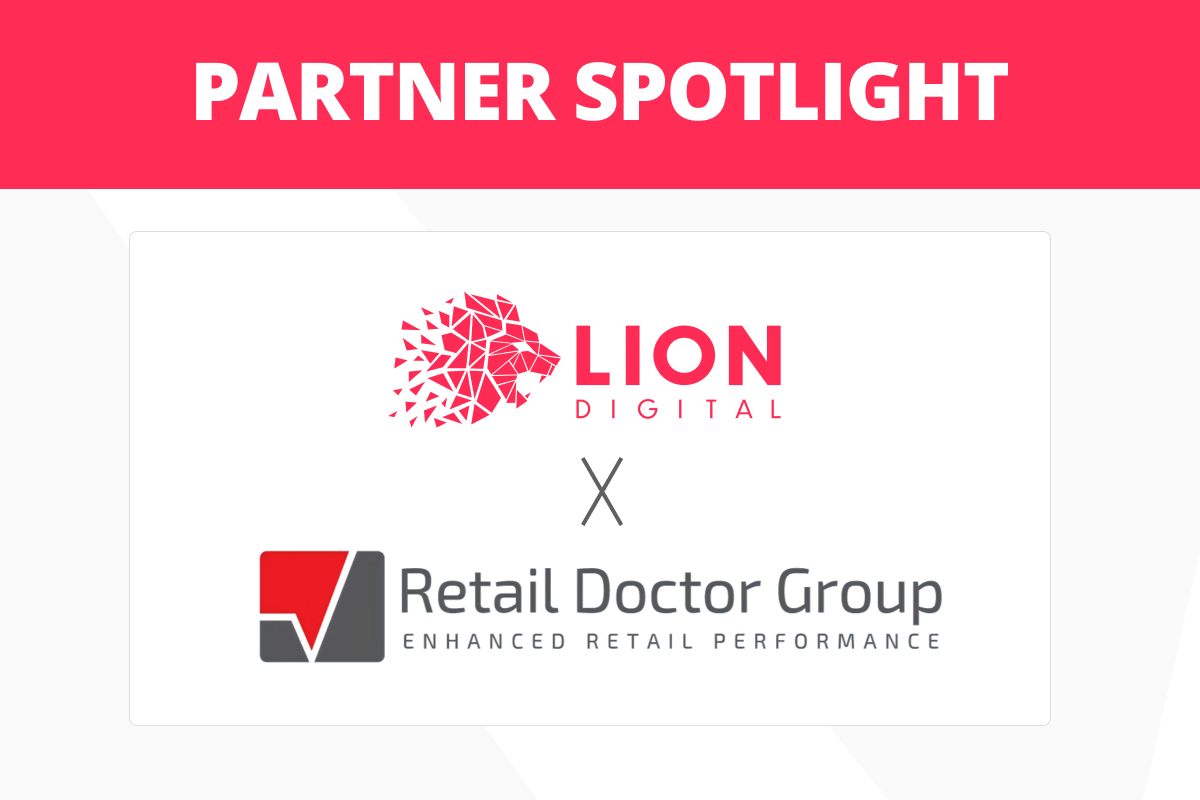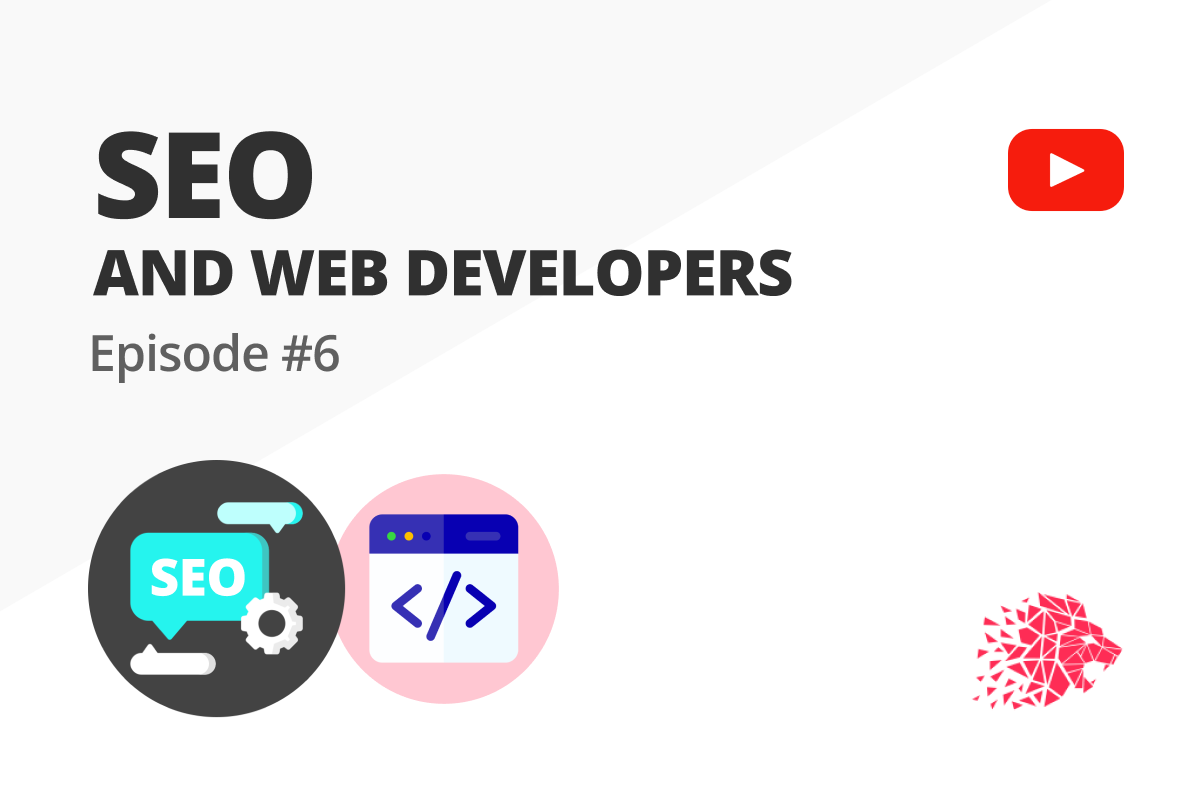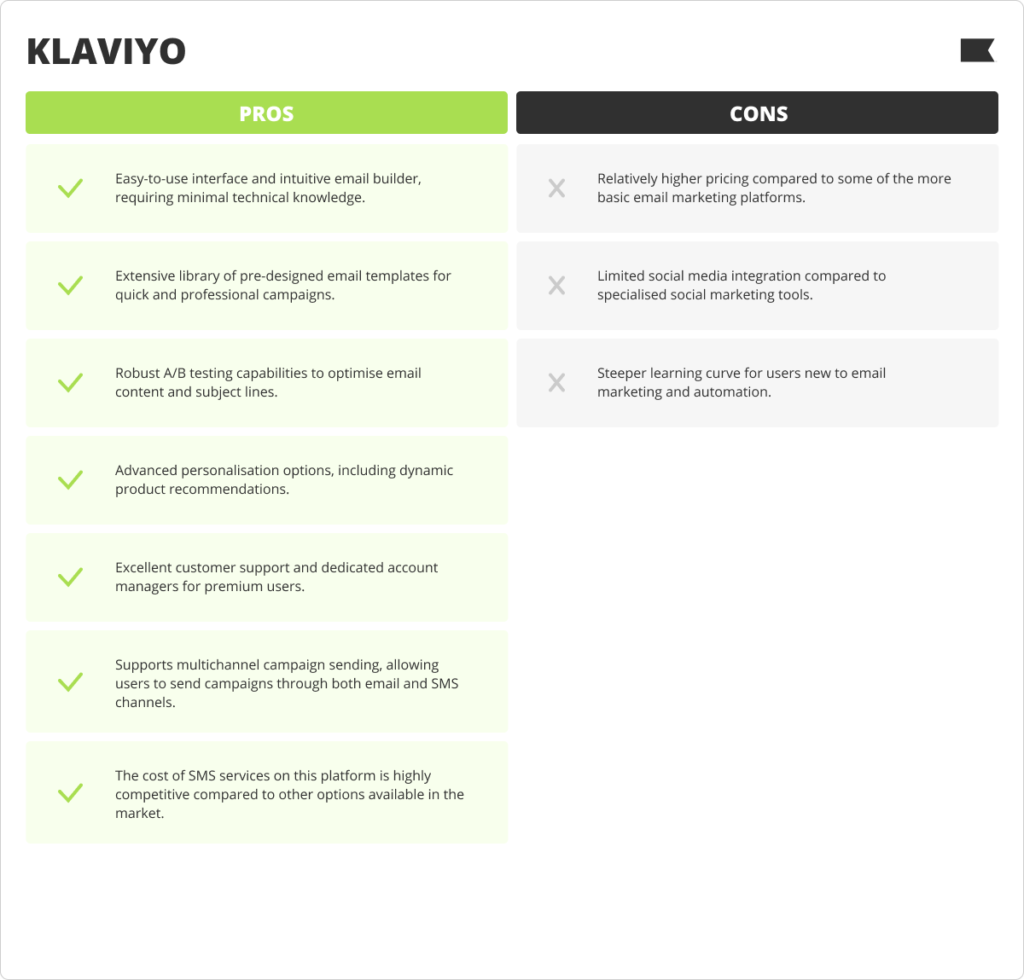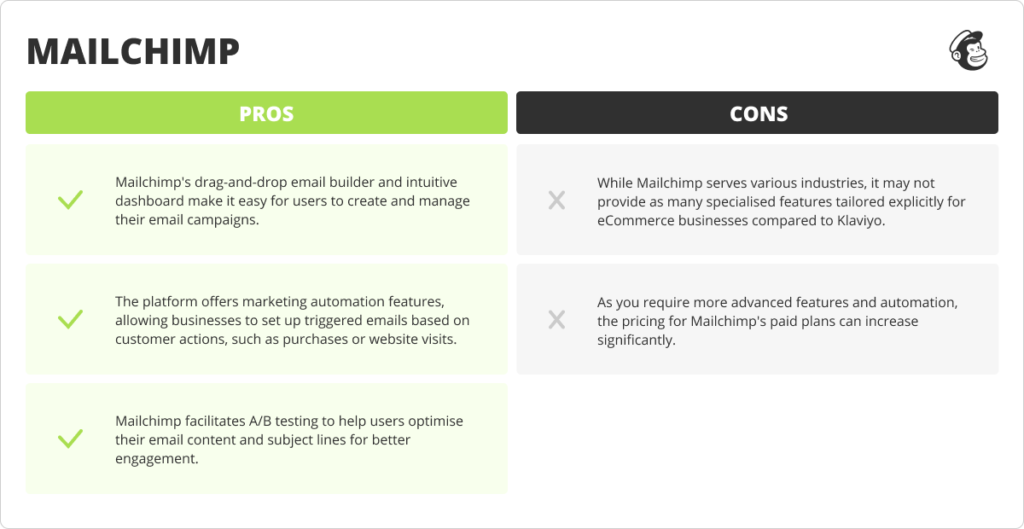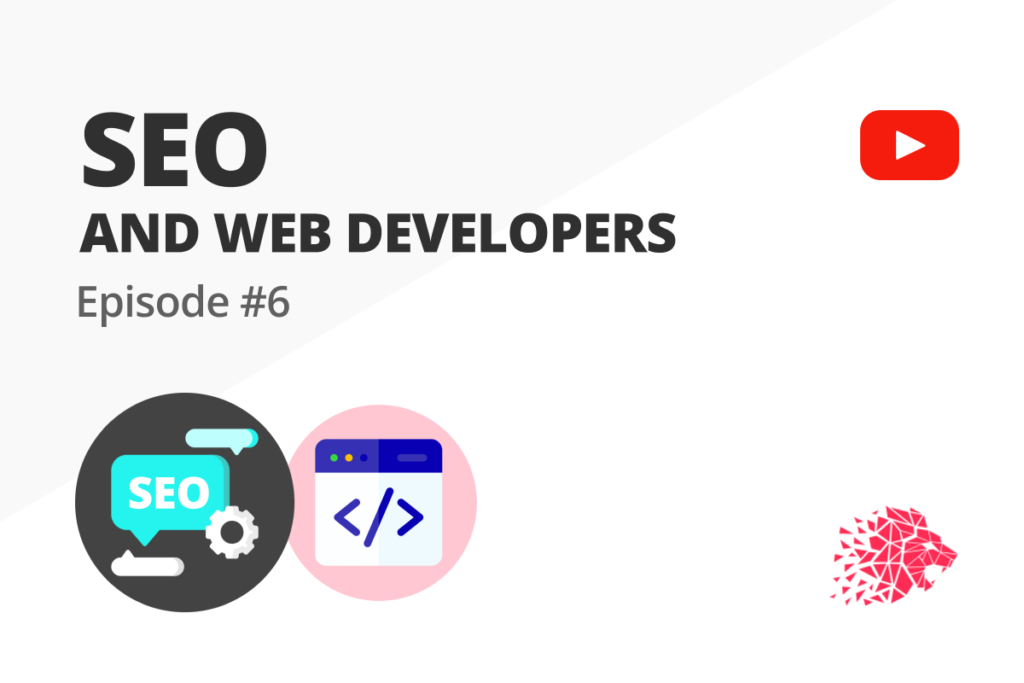
SEO & DEVS: Harmony in Tech
(1:05) MARTIN SPLITT: Ruth, I’m super excited to have you here. I saw you at a I think it was React next summit, where you gave a talk on SEO for developers. And specifically, I think you focused on React JS, was that right?
RUTH MESFUN: Yeah. In regards to mobile first indexing? Yeah.
MARTIN SPLITT: Right. Yes. That was super cool. And I was so elated when I saw that because I see so very few non SEO people talk about SEO, especially in developer circles. So, it was very refreshing to see you do that.
When Tech SEO and Development Collide
(1:39) MARTIN SPLITT: What was the experience you had giving that talk? Did a bunch of people say, “I didn’t know that”, and that was interesting and exciting, or were you met with suspicion or what happened? Did you get any feedback on that?
RUTH MESFUN: I didn’t have any feedback in regard to suspicion. A bunch of feedback was mainly like, “I didn’t know it was that easy”, “I already know this stuff kind of thing”, but they didn’t realise that actually connected with SEO. So, it was great to essentially build a bridge, if that makes sense.
MARTIN SPLITT: It makes perfect sense, because this is exactly why this video series exists. Because I think this bridge needs to be built, and it hasn’t been built not only specifically to specific topics like mobile first indexing or client-side rendering, server-side rendering, all that kind of stuff.
MARTIN SPLITT: But I think also in general, between our two professions or the two sides of the coin, one being SEO and the other one being development or engineering, there isn’t as much of a bridge.
MARTIN SPLITT: I breached into this space in 2018 when I joined Google, and it was tricky to even get developers interested in SEO. So, what got you interested in SEO?
RUTH MESFUN: It was actually really funny. So at a previous job I was in, we were hearing about this mobile first indexing, but didn’t really get into. And we’re like, okay, whatever.
And we had other projects to do until someone said, “Wait, I think that mobile first indexing or mobile first is going to mess up our index ranking because we don’t do mobile first”, and we have like a separate page for mobile.
RUTH MESFUN: When we were looking into it, we’re like, oh my God, yes. And then at the time, Google’s deadline was September and it was already end of July. And we’re like, we got to get this done. That was the reason why.
RUTH MESFUN: Especially since, where I was working was like a marketplace, essentially. So, we didn’t realise how heavily reliant we were on Google searches. So, yeah, our users would search for us on Google and most of the time, and that’s how they got to our site. We thought that it was just like word of mouth or, honestly, I didn’t even think about how they came to our site.
MARTIN SPLITT: Then having a big change in the way that Google and other search engines work then probably becomes a surprise priority.
RUTH MESFUN: Yeah, it was definitely a surprise priority for our team.
How DEVs Approach SEO
(4:40) MARTIN SPLITT: I mean, I’ve worked as a developer for over a decade at this point, and I’ve experienced that where out of the blue, someone from the marketing department comes in and say, we have an SEO problem that we need to fix, and then oftentimes they have a really hard time even formulating it.
MARTIN SPLITT: So, the fact that you started with knowing that you were looking for mobile first indexing is already very nice because oftentimes it just, “we have an SEO problem”. It’s like, “what is it?”, “We don’t know, but we have an SEO problem.”
MARTIN SPLITT: It’s like, oh, great, and then you have to figure out you need to figure out what you don’t know. Right. It’s like, “how do I search for we have an SEO problem”, “How am I going to get a meaningful search query for this?”
MARTIN SPLITT: But where did you then take to or what kind of resources did you look to in terms of figuring out what you need to do and what is the supposed best practice and what’s the solution to the challenge you were facing? How did you go about this journey of figuring out what you need to do next?
RUTH MESFUN: I really like front end in general, so I naturally gravitated to, I’ll do research on SEO for my team and be one of the “experts”. I’m going to put quotation to “experts” because no way I’m an expert at SEO. But to be well informed, to explain it to my team and whatnot. And honestly, the webmaster’s videos, I watched almost all of Google’s SEO videos.
RUTH MESFUN: Because I was like, all right, well they’re the ones who are setting this whole mobile first indexing thing, so they must be like the experts if they’re the ones doing it. So, I watched the videos, which was great. So even like y’all’s, quarterly, or I think it used to be monthly videos of what’s going on and what’s the updates. I’d watch those and then all the best practices that Google put for mobile first as well. I read those up and had a couple of resources in regard to the difference between desktop first versus mobile first. Because I think a couple of the rules or guidelines changed a little bit because it was mobile first now. But honestly, I just went straight to Google for everything because since Google was the one who was stating that they were going to make it mobile first indexing only, I figured they were the most expert in SEO for what we were looking for.
MARTIN SPLITT: Interesting. I mean, it’s very flattering to hear that you watched all the videos and you probably are a fan of Google search news at this point. John is going to be really excited about that as well.
Google’s SEO Resources for DEVs
(7:51) MARTIN SPLITT: But it’s quite interesting that you went straight to, well, the source as far as it goes there because a bunch of people are not, and especially developers oftentimes are like, “how hard can this be?”, “We don’t really need to do any research”, “We’ll just fudge our way through it.” So, it’s really, really cool to hear that you went with that.
MARTIN SPLITT: Did you have any experience of looking at third party sources that said other things or did we have any holes where you’re like, there’s information missing?
RUTH MESFUN: That’s actually the main reason why honestly, I went straight to the source. It’s boring as that might sound of like, “Oh, go to if you literally Google Mobile first indexing and you find webmasters, Google click that,” the reason why was because there was a lot of misinformation with third parties.
RUTH MESFUN: So for instance, I had a product manager who came up and was like, “Oh no, we can’t do accordions or this or this or this, because that’s going to hide the data and it’s not going to show..” andI didn’t read that on the mobile first indexing. That doesn’t make sense. “Oh I saw it on this article..”
RUTH MESFUN: So, I read the article and I was like, well, this article seems like it’s a couple of years old and this looks like they are talking about desktop and not mobile-first. So, this might be out of date, and I think some people ran with that article essentially and wrote their own articles of what the complications of mobile first.
RUTH MESFUN: And I was like, no, it’s still they’re trying to make sure that they’re more forgiving because it’s mobile first and there’s such a compact screen now that it doesn’t make sense that they’re going to say, “no accordions, no this..” It’s more of like, as long as you’re doing server-side renderings, this is populating data, like all this stuff, it’s more forgiving because it’s mobile-first. And so looking through and going back to the source, which was Google, I was able to tell them, debunk that statement or that resource, essentially.
Debunking Outdated Info
(10:15) MARTIN SPLITT: It but that’s really, really nice, because oftentimes information used to be correct and then things change. Or people looked at one specific aspect and then generalise that too much. That does happen. That happens all the time. That happens in development, too, where people are like, you cannot test, I don’t know, angular code. And it’s like, actually, you can. You just have to know how
MARTIN SPLITT: It’s good to hear that we could debunk some of that stuff. That’s nice. But to be honest, I would just wish, because if you think about it, and if you look at what you discovered and what people have said, a lot of it, there are some aspects that are kind of rocket science, but a bunch of it is relatively easy to grasp concepts and best practices, and yet most developers don’t really pay attention to it or don’t care about SEO.
MARTIN SPLITT: Do you have any idea where that could come from? Like, why don’t they just know these things? Because I think all of us know how to make a link, a semantic link, and what semantic HTML is supposed to look like, and what the latest JavaScript feature is, and where it’s useful and how it works and what’s the syntax for it. But these kind of basic concepts seem to be missing in the developer world.
RUTH MESFUN: So, a couple of things. I think there’s like two or three points in regards to that. One, I don’t think every essentially, developer knows about JavaScript and semantics and structures and whatnot.I would assume that most or if not all, front end engineers should, but not all software developers.
Measuring Impact
(12:12) RUTH MESFUN: And then the second thing is, honestly, I didn’t realise the importance of SEO until we completed our SEO project to be mobile-first, and then our product manager and actually the marketing team sent it to our product manager. And the product manager told us, like, “Oh, we had a huge increase of views on our site, which converted into an increase in sales or revenue.” And when they showed us the graph, it literally made it a nice incline right at the time we shipped our project, essentially, or turned on the feature flag.
RUTH MESFUN: So, it was used, and we’re like, “Oh, this is important. It was great.” And I don’t think it was just because of the SEO, to be honest. I think a lot of the things we did was made our pages more performant, made it more user friendly, made it more accessible. And those are actually the big three items or key items when it comes to SEO and mobile-first indexing.
MARTIN SPLITT: Exactly. There’s like two things that I want to tag onto. One is it’s very interesting you say that we didn’t just do things for SEO purposes, we did things for the user and that was rewarded in search engines, which is exactly what we want.
MARTIN SPLITT: A search engine tries to find the best possible experience and the best possible answer to a query from a user and present sites that are good for the user to fulfill whatever intention they had with a query, they entered into the search engine. So, making it better for the user is usually also equal to making it better for search engines.
MARTIN SPLITT: And the other thing is, was that the first time this kind of information like, “hey, here’s the thing you did, here’s the impact”, was that the first kind of opportunity where they brought back impact information to the changes you made? Or is that something that only sales normally does? Like, “Oh, you’ve deployed this new feature and it has gotten us this amount of customers that we didn’t have”, or like this amount of revenue that we didn’t have before, or does that happen more often? Or does it happen more often, but not with SEO? Do you usually get to see the impact of your work?
Why Seeing Results Matters to DEVs
(14:54) RUTH MESFUN: Yes, so for all of our projects, we always get to see the impact afterwards. It’s not rewarding if we don’t. At least for me, it’s not rewarding. Regardless of if it’s revenue or ease of use because of that feature or increase of review ratings or whatnot. But for the SEO one, honestly, I did not expect, I don’t know why I didn’t think of it, but I honestly didn’t expect that we were going to get a result so quickly or any real result.
RUTH MESFUN: I just thought, “Oh, this is going to help with SEO”, “That’s going to increase traffic eventually”, or at the minimum case, keep it at the same, which was actually our goal, was like, let’s not deprecate or decrease our index rating, was like our actual goal.
RUTH MESFUN:So, the fact that it not only like, we not only kept it, or we didn’t get it deprecated or decrease our ranking, it looked like it had a positive effect In regards to our users.
Interactions Between SEO and DEVs Matters
(16:18) MARTIN SPLITT: I’m not blaming you for not expecting or anticipating that, but it’s something that I find interesting. So the SEO team doesn’t usually let me rephrase the question. How often before did the SEO team interact with the engineering side of things?
RUTH MESFUN: Not that much.
MARTIN SPLITT: Not that much. Okay, that’s interesting. That seems to be like the underlying systemic issue between developers and SEOs that there is this weird gap and there is not that much collaboration or information sharing and that’s really, really unfortunate because oftentimes SEOs tell me that they are kind of fighting the development team, like, “oh, they want to roll out this thing and they screw us up and then we have to clean up after them for like a month”, and I’m like, “but did you talk to them beforehand?”, “Well, they didn’t talk to us beforehand”. And I’m like, so no one wants to talk to anyone at any capacity or time? Which is like super unfortunate.
MARTIN SPLITT: And I feel like this is close to the root cause of the issue where developers don’t care that much about SEO or don’t even know about SEO. Right.
RUTH MESFUN: I think that it’s mostly of a combination of the developers don’t know about SEO or don’t understand the value or the importance.
RUTH MESFUN: And then I would also say there’s a third thing of not realising how easy to do either SEO practices or run through if the feature you’re building or developing might be performant or not performant, which would actually cause a decrease in SEO and a decrease in performance in your site, which is not good.
MARTIN SPLITT: Fair enough. Yeah.
RUTH MESFUN: So, I think those are the combinations. If it’s something that deals with in my opinion, if it’s something that deals with main pages on the site that is going to be searchable on Google, right. Then that’s something that should, like, during the roadmap or design doc or like the SEO manager or expert should come in and look into and give their feedback on it. Because it’s just so hard as a developer that you build this feature and then you have to come back to fix it. You want to hopefully be able to complete the first iteration of it before having to fix bugs, ideally.
SEO Tools for DEVs
(19:13) RUTH MESFUN: And then I think the second thing is in regards to it, is there’s like a couple of tools that developers can actually utilise to see if that feature is going to be performant or not. Or at least use it while you’re building this feature. And then eventually you’ll develop a muscle where you could kind of feel if this is going to be a performant feature. So, Lighthouse was super useful on that.
RUTH MESFUN: The web platform team built a script around Lighthouse. So, whenever you built a feature, and it has, like, a feature flag, you can run the script like 500 times with that feature flag on or off and off to see the difference of performance between what’s already on prod versus what you’re going to push through, essentially.
RUTH MESFUN: And so we’re able to see “oh, this is going to make things better. LCP is lower. This is great.”
MARTIN SPLITT: It’s True. Yeah. I think it’s important to integrate that in your workflow as developers, so that it kind of becomes a natural part of your work and you see the impact as often as possible. Right?
RUTH MESFUN: Yeah, exactly. I think it’s called bundle phobia. So whenever introducing new packages or if someone’s like, “oh, I love this graph package, for instance, of building graphs or whatnot”, I always go to a bundlepedia or bundle phobia to see how large the package sizes. Because if it too large, right? Even if it is a great package. That’s going to actually decrease our performance and it will increase load and it won’t give a great user experience, which can also mess with our index rating or SEO score.
RUTH MESFUN: And it’s like, “is it worth that?”
MARTIN SPLITT: That’s a little rocket science.
Bundle Size and Rocket Science
(21:42) MARTIN SPLITT: I like that. And I think, like, rocket science in this case is actually a very apt comparison because in rocket science, you have this issue that you want more thrust, so you need to add more fuel. But more fuel means more weight, and more weight means you need more thrust.
MARTIN SPLITT: And then there’s like this sweet spot where, adding more fuel actually gives you more thrust and not so much weight that it’s like, offsetting negatively. But eventually just adding fuel just means that the thrust you gain from the extra fuel is not as big as it needs to be to actually offset the fuel that you added. And then you get negative increase or negative benefit from it, and you actually lose performance.
MARTIN SPLITT: And it’s similar to that with packages like, “oh, we need graphs”, and then you’re like, “okay, we need a thing to make graphs now”.
MARTIN SPLITT: So, there’s this one, package A, and then there’s the other package B. Both of them allow us to make graphs, but one adds so much more weight to the page that needs to go through the wire and only adds this little feature of graphs where the other one is smaller and also adds this little feature. So, you should go for that one, but that’s the smaller one.
MARTIN SPLITT: Package B that is smaller does not necessarily make it here for developers. Like, the other one might be the more comfortable for developers and then developers gravitate towards the wrong choice.
RUTH MESFUN: That’s actually what happened with us. It was like, we saw this package A had all the bells and whistles. Package A was also ten times the size, and web platform was like, no, we’re not doing this.
RUTH MESFUN: We did package B. It was still a little large, but not as large as Package. And we were like, performance still. We weren’t feeling comfortable. So then we just built the graph, ourself because it was a bar graph. We were like, “it’s just a bar graph. We don’t need all of this”. And no package means lighter. So this is great.
Performance Culture
(23:47) MARTIN SPLITT: Yes. Good performance culture right there. Because I fell into this trap so many times where it’s like, “oh but this library is really nice and it makes everything go so fast and easy”, but then you see like, “oh, but it’s actually dragging down our performance,” And unless there’s a performance culture where someone keeps you accountable for that, its kind of just happens, and then the website just grows and bloats. So that’s really cool. That’s really nice.
MARTIN SPLITT: You said something about low hanging fruit that you didn’t know about. Is that something that you would have hoped for or expected the SEO team to reach out to you that they like because they probably knew about these low hanging fruit, but they didn’t necessarily communicate them, or maybe they didn’t know about them.
MARTIN SPLITT: Would you want SEO teams to be more proactive when it comes to, like, “oh, there’s like this small change that you can make that has this huge impact and this positive impact”, is that something that you would expect help from your SEO experts with?
RUTH MESFUN: Yeah, I think that would be super helpful on if we hear what the low hanging fruit is, and we can tell you if that is. Actually really simple and easy or not. So most of the time it is. It’s like, “oh, okay, I just need to update, and I just need to add lazy loading for all the images.“ Right? That’s really easy to do.
MARTIN SPLITT: That’s true. That’s easy to do. Lazy loading is a perfect example of that. We are trying to give guidance to SEOs in our documentation for low hanging fruits, but it’s tricky because low hanging fruits for one project and one tech stack might not necessarily be low hanging fruit for the others.
MARTIN SPLITT: So, again, I think there needs to be a dialogue, right? I think it’s perfectly fine if an SEO comes like, “hey, this thing would have a big impact. How hard is it to do this?” And then you are the experts on the engineering side, so you can evaluate if it’s a low hanging fruit or not. So, again, there needs to be a dialogue, I guess, right?
RUTH MESFUN: Yeah. I also think that though, I don’t know if this is something that every team can do, but I think it was really helpful that I was really excited about SEO. I’m usually excited for SEO and accessibility.
SEO and DEV Liaison: A New Role
(26:12) RUTH MESFUN: Yeah. So, because of that, I was almost like a liaison kind of thing of being able to connect, like, “oh, what are the SEO best practices?”, and be able to translate it to the team, and they’d be able to go to me and since I already have a strong relationship with my teammates, it was like the trust was already there. And then what they did afterwards was they actually added, like, an SEO expert within the team, because we dealt with all the essentially all of our pages were pages that were searchable for Google.
RUTH MESFUN: So, they’re like, “oh, you need kind of like an SEO expert”. So they actually added an SEO member to our team. So, he was essentially our go to person for questions.
MARTIN SPLITT: I think that’s really cool, and I would love to see that more often, because I think this liaison that you built and then the SEO expert in your team, that’s a very essential thing. And I think it requires, to a certain degree, I’m not sure about your SEO expert that you got in your team. It is helpful if that person is at least technically inclined or has an interest in development and engineering. I guess it works if they don’t, but I don’t know how it was in your case. Did they also know bits and pieces about development not necessarily being a developer themselves?
RUTH MESFUN: I don’t think that he necessarily knew pieces of development. It’s kind of like a product manager, a non-technical product manager might not know all the technical aspect. They rely on us, but we’ll say, “this is what I want”, or “this is why we need this”, and “this is why this is important”. Right? And then it’s the developer who pushes back saying, “I think this is going to be like a higher complexity”, or “can we do it this way to achieve the same goal?”
MARTIN SPLITT: I see. Yeah. So that’s interesting because I always assumed that for this to work, they have to have at least some technical knowledge. But I guess if you look at it from a product manager’s perspective, it doesn’t have to be it’s perfectly fine if yeah, okay. That’s interesting. That’s really, really cool. That’s really interesting.
Summary
(28:48) MARTIN SPLITT: The other thing that I was wondering is. You said like, it was interesting and it’s like rewarding to me to see the impact of my work and to find out about these low hanging fruits. So what you’re saying is, just to make sure that I understood that correctly, you’re saying is developers generally are interested in the impact of their work in terms of SEO and doing SEO work for the benefits that you can reap by doing it.
RUTH MESFUN: Yeah, I’ll do it based on essentially I’m not going to generalise it, but I’ll say based on myself and my team and the teams I’ve worked in in the past and currently actually is we are very invested in our users. We are user driven, user-centric, crazy about our users and wanting them to get whatever need. Our goal is, essentially, is allow our users to easily use our apps, our page, and do the thing that they wanted to do on our site. Right?
RUTH MESFUN: And so essentially, if that’s not happening, we’re not doing a good job and we feel bad about it. We’re like, “oh, we want them to access this”. This is important. What was the point? I’m very result driven and I know the teams I’ve been in have been result driven and in a place of the love for the user.
MARTIN SPLITT: That’s really nice, I like that statement. So, I do hope that there’s a lot more developers like you and your team who are doing it for the love of the user, which I think is the right attitude to things, and I think actually SEOs. Fundamentally are also doing it for the love of the user, except that they work towards or through a search engine, which I think we are doing it through front end technology.
MARTIN SPLITT: So different means for the same end goal. So I think we share that end goal and I would hope that we would connect more to reach this goal together. So, yeah, let’s hope that this series and these conversations do help to shape the path and more teams to be like this, keeping fingers crossed.
MARTIN SPLITT: Awesome. Excellent. Ruth, this has been really cool, really interesting. I learned a bunch of new stuff. For instance, that having an SEO expert on your team, even if they don’t necessarily are technical, is super helpful and can help make these things more visible and share insights into what could be done to improve SEO, and then leaving it to the engineering team to figure out how easy or how low hanging this specific thing is.
MARTIN SPLITT: Thanks a lot for your time. Thanks a lot for being here. And thanks everyone who’s watching the video out there. I do hope you got something out of it as well. And see you soon for another episode. Bye.
Sign up for SEO & Web Developers today!




